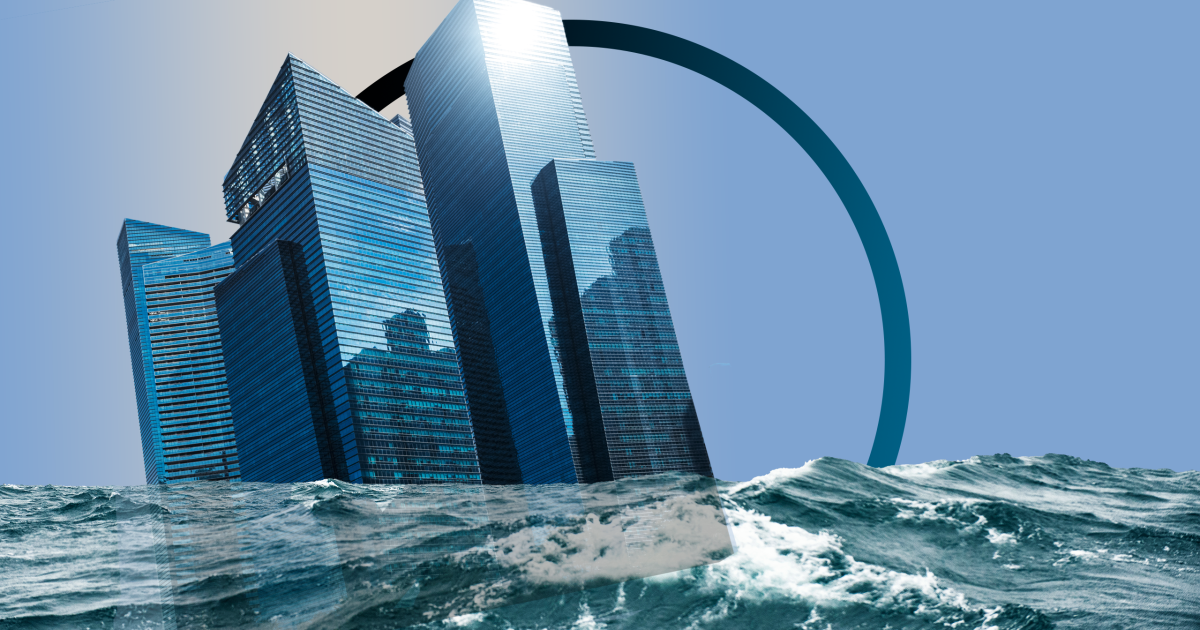What really fuels a boom-and-bust cycle in the modern global economy?
It’s not always household debt, says a new paper that parses in-depth data across 115 countries. Instead, rising corporate debt may flash the clearest warning that a fiscal crisis is on the horizon.
In recent years, experts focused on housing and household debt for good reason: In the United States, a residential housing loan collapse touched off the deep financial crisis of 2008. But in the decade-plus since, the focus on household debt may mean policymakers are overlooking an even more important signal of potential widespread distress: Corporate credit quality and growth, says Harvard Business School Professor Victoria Ivashina.
“It’s only in the US in 2007 and 2008 that we observed the highest fraction of the non-performing loans coming from households.”
Debt incurred by companies accounted for two-thirds of credit growth during the three years preceding financial busts, downturns, and crises from 1940 to 2014, the analysis finds. Once a boom cycle begins to bust, it’s corporate debt that accounts for the vast majority of unpaid loans.
What’s more, corporate debt is a drag on recovery, rebounding more slowly than households. Once banks are forced to cope with that load of unpaid debt, historically, the consequences amplify, says Ivashina, the Lovett-Learned Professor of Business Administration and Finance Unit Head at HBS.
“It tells you that the US great financial crisis is a total outlier,” she explains. “It’s only in the US in 2007 and 2008 that we observed the highest fraction of the non-performing loans coming from households. And even then, you can see that the losses coming from the companies were substantial as well.”
The findings suggest that corporate debt expansions can yield important information about the risk of future economic crashes and deserve more scrutiny from policymakers, economists, and regulators. The paper emerges after years of persistent inflation and mounting interest rates, and amid close scrutiny of the state of the economy.
Ivashina coauthored the paper with Ṣebnem Kalemli-Özcan, professor at the University of Maryland; Luc Laeven, director at the European Central Bank Research Department; and Karsten Müller, assistant professor at the National University of Singapore.
Data ‘unprecedented in breadth and scope’
The authors used newly released data from the Global Credit Project to analyze the impact of corporate debt in more than 100 advanced and emerging economies in the credit booms that typically precede financial crises.
The data overlaps with 87 systemic financial crises, including:
- The Scandinavian crises of the early 1990s
- The Mexican tequila crisis of 1994
- The Asian financial crises of 1996 and 1997
- The Argentinian crisis of 2001
- The Eurozone crisis of 2009 and 2010
The authors parsed the in-depth data by industry. They focus on lending to:
- Agriculture, manufacturing, retail, and wholesale trade, which are more important in developing countries.
- Construction, finance, and household credit, which is more prominent in wealthier countries.
- Firms that offer lending but aren’t subject to the same stringent rules as banks, including leasing or finance companies, insurers, and pension funds.
Together, the analyses form a pool of research that parse data “unprecedented in its breadth and scope,” the researchers write.
Understanding the role of leverage
Ivashina and colleagues measure changes in a credit-to-GDP ratio, tracking corporate credit alongside GDP growth. Overall, a single standard deviation increase in that ratio foretells a 3.6 percentage point rise in the probability a financial crisis will ensue.
When commercial lending is backed by real estate, the alarm sounds even louder. Each standard deviation increase in real-estate backed corporate credit relative to GDP is linked to a 3.7 percentage point increase in the probability of a crisis within the next three years.
“Once the bank balance sheet is handicapped, all kinds of other consequences come out.”
An ensuing recovery can take longer to develop once a financial crisis abates if commercial credit is the driving force of an economic bust, the analysis shows. For commercial debt backed by real estate collateral, non-performing loans rise more than 81 percent once the crisis hits.
“Once you have defaults in the commercial sector, the bank balance sheet is handicapped. And we show that, for example, there is an escalation of non-performing loans,” Ivashina says. “Once the bank balance sheet is handicapped, all kinds of other consequences come out. For one, for example, banks are less likely to lend.”
Not all countries and sectors relied as heavily on land and buildings to secure debt. Using a measure of real estate collateral share across five countries, the research finds that:
- 84 percent of outstanding loans in construction and real estate are backed by real estate.
- In transport and communication, that number drops to 29 percent.
- The US economy behaves markedly differently, with just 6 and 4 percent respectively in those two spheres backed by real estate.
Important signals for potential future crisis
Policymakers should monitor firm credit behavior in more detail, the authors advise. The findings also raise the question of whether there should be limits on leverage ratios for firms, similar to standards for household loans.
“Our goal is not to say that household credit is not important. Clearly it is.”
And regulators should pay particular attention to loans that rely on real estate for collateral, even in industries other than real estate.
“Our goal is not to say that household credit is not important. Clearly it is,” Ivashina says. “Our goal is simply to backpedal away from this narrative that somehow post World War II, in a world where the current household debt drives everything, everything else is relatively inconsequential in macro terms.”
You Might Also Like:
Feedback or ideas to share? Email the Working Knowledge team at hbswk@hbs.edu.
Image: Image created by HBSWK using asset from AdobeStock/Ivan Kurmyshov
“Harvard Business School is the graduate business school of Harvard University, a private research university in Boston, Massachusetts. It is consistently ranked among the top business schools in the world and offers a large full-time MBA program, management-related doctoral programs, and executive education programs.”
Please visit the firm link to site






